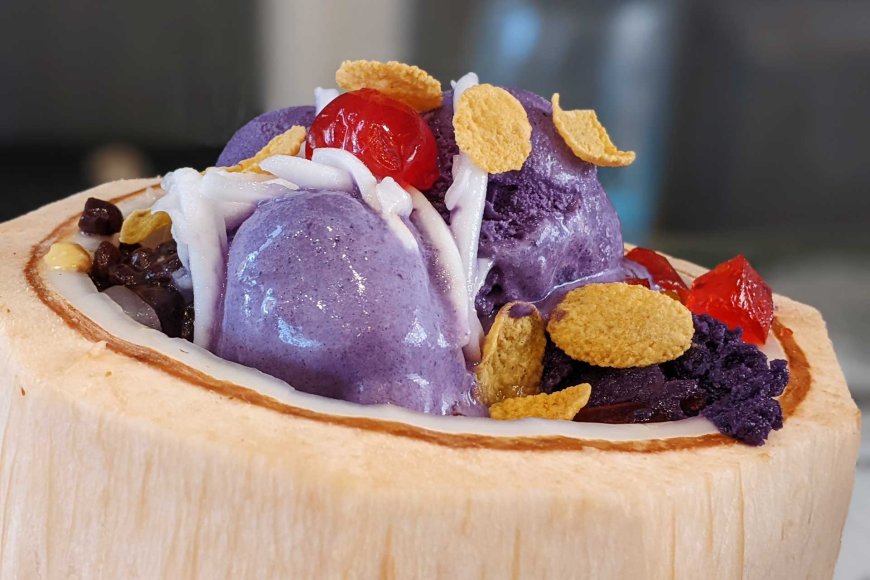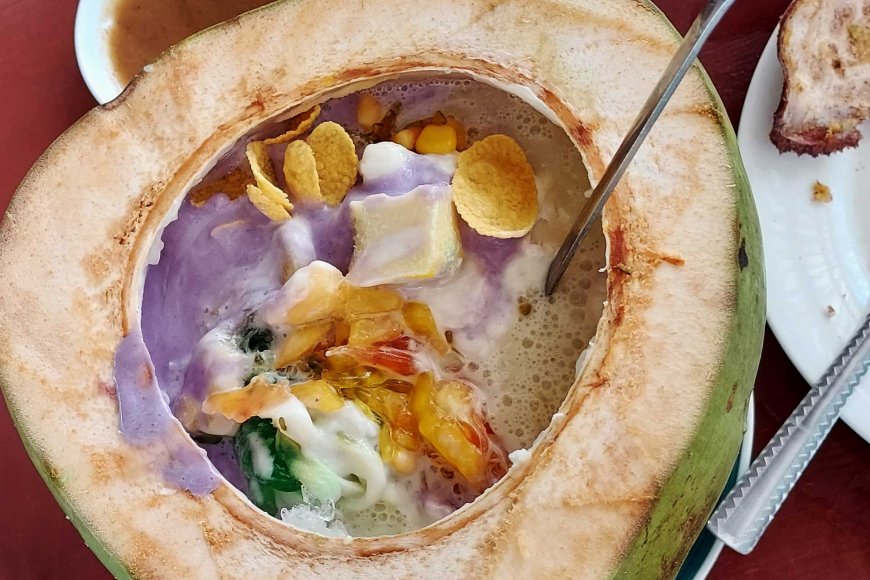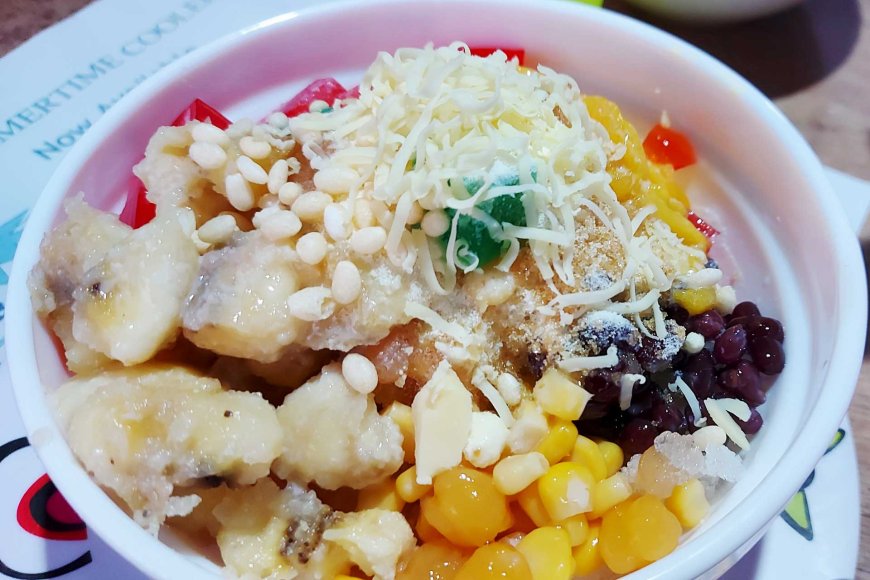Halo-Halo: The Sweet Filipino Mix That Delights All
Halo-Halo is more than just a dessert; it’s a celebration of Filipino culture and history in a bowl. With a blend of unique ingredients and a story that spans centuries, this colorful treat continues to captivate taste buds in the Philippines and in different parts of the world.

A Quintessential Filipino Delight
Among the many delicacies that the Philippines offers, one stands out as a true emblem of Filipino culture: Halo-Halo. This beloved dessert is not just a treat for the taste buds; it is a vibrant symbol of the Philippines' history, geography, and the Filipinos’ unyielding love for food.
 Credit: Daragang Nagueña
Credit: Daragang Nagueña
The Origins of Halo-Halo
The name “Halo-Halo” literally translates to “mix-mix” in English, which is an apt description of the dessert itself. Halo-Halo is a concoction of various ingredients, each contributing its unique flavor and texture. The dessert's origins can be traced back to the Japanese shaved ice dessert known as kakigōri. During the early 20th century, Japanese migrants introduced their version of shaved ice topped with sweet beans to the Philippines. Over time, the Filipinos adapted and localized this dessert, adding more ingredients, flavors, and their own twist to it, ultimately giving birth to what we now know as Halo-Halo.
 Japanese shaved ice dessert known as kakigōri.
Japanese shaved ice dessert known as kakigōri.
The Ingredients: A Symphony of Flavors
What makes Halo-Halo truly unique is its combination of ingredients. At its core, Halo-Halo consists of shaved ice and evaporated milk, but it’s the variety of mix-ins that makes each serving distinct. A typical Halo-Halo might include sweetened bananas, jackfruit, macapuno (a type of coconut), ube (purple yam), sweetened red beans, nata de coco (coconut gel), sago (tapioca pearls), and kaong (sugar palm fruit). The dessert is often crowned with a scoop of ube ice cream, a slice of leche flan, or a sprinkling of pinipig (toasted rice flakes), adding even more layers of flavor and texture.
Each of these ingredients holds a special place in Filipino cuisine and reflects the country’s agricultural abundance. For instance, ube and coconut are native to the Philippines and are celebrated in various other dishes. The mix of local fruits and beans, combined with the influence of foreign elements like ice cream, represents the country's history of cultural fusion.
 Credit: Elmer B. Domingo
Credit: Elmer B. Domingo
The Experience: More Than Just a Dessert
Enjoying a Halo-Halo is more than just satisfying a sweet craving; it’s an experience in itself. The process of mixing all the ingredients together before taking the first spoonful is a ritual that many Filipinos cherish. As the ingredients blend, they create a medley of flavors and textures that is both refreshing and indulgent.
The sensation of cold shaved ice melting on your tongue, combined with the sweetness of the fruits, the creaminess of the leche flan, and the slight crunch of pinipig, creates a sensory overload that is both comforting and exciting. Each bite offers something different, as the various components of Halo-Halo reveal themselves in stages.
 Credit: Herbertkikoy
Credit: Herbertkikoy
Halo-Halo as a Cultural Icon
Halo-Halo is more than just a popular dessert; it is a cultural icon in the Philippines. It’s often enjoyed during the hot summer months, providing a cool respite from the tropical heat. However, its popularity extends beyond the summer season, as it’s commonly found in many Filipino restaurants and street vendors year-round.
The dessert has also gained international recognition, with Filipino communities abroad proudly sharing this piece of their heritage with the world. In recent years, Halo-Halo has been featured in various food blogs, travel shows, and even in international culinary competitions, where it continues to impress with its complexity and uniqueness.
 Credit: Theoylmaid
Credit: Theoylmaid
Regional Variations: A Reflection of Local Tastes
While the basic components of Halo-Halo remain consistent, there are numerous regional variations across the Philippines, each adding a local flair to the dessert. In Pampanga, for example, Halo-Halo is often made with creamed corn and sweetened beans. In Cebu, it might include mashed sweet potato, while in Bacolod, it’s not uncommon to find fresh fruits like mangoes and pineapples added to the mix.
These regional variations reflect the diverse culinary traditions of the Philippines, where local ingredients and tastes influence even the most beloved national dishes. Each version of Halo-Halo offers a glimpse into the local culture, making it a culinary journey through the archipelago.
 Credit: Marife.altabano
Credit: Marife.altabano
The Future of Halo-Halo
As the Philippines continues to embrace modernity, Halo-Halo has also evolved. Contemporary chefs and food enthusiasts have started experimenting with this traditional dessert, incorporating elements of molecular gastronomy, or presenting it in more avant-garde forms. However, despite these innovations, the essence of Halo-Halo remains the same—a delightful mixture of flavors that brings joy to those who partake in it.
The enduring popularity of Halo-Halo, both in the Philippines and abroad, is a testament to its versatility and appeal. It’s a dessert that not only satisfies the palate but also tells the story of a nation—its history, its people, and its love for good food.
 Credit: Marife.altabano
Credit: Marife.altabano
A Delicious Fusion of History and Culture
Halo-Halo is more than just a dessert; it’s a celebration of the Philippines' rich culinary heritage. With its roots in Japanese kakigōri and its evolution into a distinctly Filipino treat, Halo-Halo embodies the country’s history of cultural blending and innovation. Whether enjoyed on a hot summer day or as a comforting treat year-round, Halo-Halo remains a beloved symbol of Filipino identity, offering a taste of the Philippines in every spoonful.
Find Cheap Flight Tickets to any Destinations in Japan and the Philippines
Nipino.com is committed to providing you with accurate and genuine content. Let us know your opinion by clicking HERE.






























































